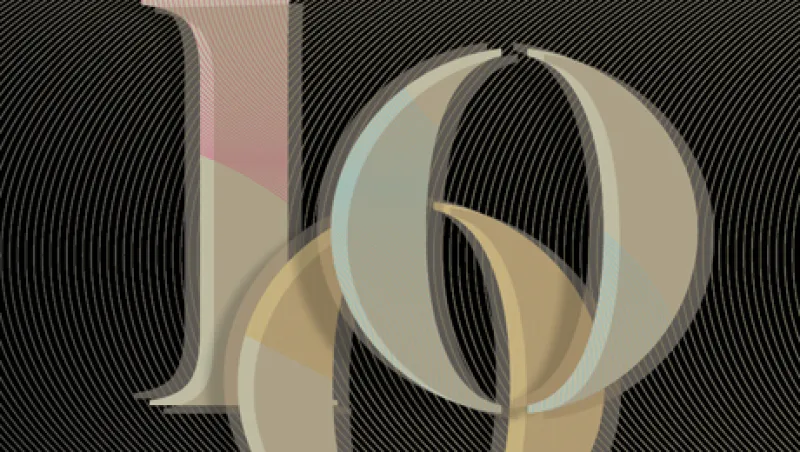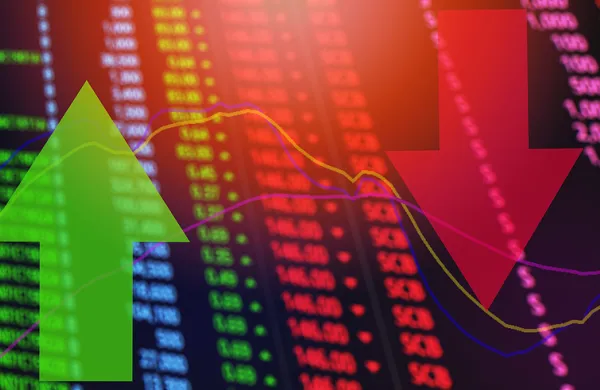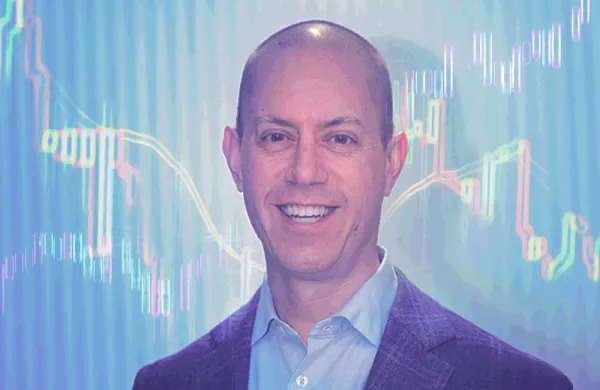Hedge fund managers that focus only on company valuations are doing it wrong, says Robert Prince, co-CIO of Bridgewater Associates — the top firm in Institutional Investor’s 11th annual ranking of the world’s 100 largest single-manager hedge fund firms by assets under management. In a nutshell, Prince insists, fundamentals-focused managers often fail to justify their fees because they are too exposed to the markets. “A lot of managers put a lot of time into picking securities,” he says. “But at the end of the day, they all have the same exposure.” When the markets move, these portfolios move with them, and any expertise gets canceled out, explains Prince. “If you don’t go through a systematic process of balancing your risk, including accounting for beta, no matter how many good decisions you make in security selection, it is overwhelmed.” In other words, good securities selection does not matter — or at least it matters a lot less, according to Prince. What is important is whether a portfolio is correctly balanced to deal with market risks.
Certainly, Prince’s point proved true last year. Bridgewater, founded in 1975 by Raymond Dalio, the son of a jazz musician, seeks to build portfolios that are risk and market neutral. The firm focuses on deriving returns from what it predicts the macro trends will be irrespective of what happens in the stock markets. The strategy put in place by Dalio and Prince, who joined the firm in 1986 as co-CIO alongside Dalio, has been working. Westport, Connecticut–based Bridgewater’s main hedge fund, its Pure Alpha Strategy, returned 25.3 percent last year, when the average hedge fund was down 2 percent, according to HedgeFund Intelligence. Last year Bridgewater fared particularly well in commodities and leveraged bonds.
The success of Pure Alpha and of Bridgewater’s passive long product, the All Weather fund, during and since 2008 has pushed the firm’s hedge fund assets under management to $76.1 billion at the start of 2012 from $36 billion at the start of 2008. Bridgewater now manages a stunning $22.5 billion more than its nearest rival, J.P. Morgan Asset Management, which with $53.6 billion comes in at No. 2 in II’s ranking.
The amount of assets controlled by the 100 largest firms has risen to $1.23 trillion this year, up 1.65 percent from $1.21 trillion at the start of 2012 but still short of the previous high of $1.35 trillion at the beginning of 2008 (complete data and methodology are available at institutionalinvestor.com). That growth has been fueled by inflows from large institutional investors — pension plans, sovereign wealth funds, foundations, endowments and significant family offices — which prefer managers, like Bridgewater, that have strategies able to handle the big checks institutions must write.
The scalability of systematically or quantitatively oriented funds, plus their recent performance, has created a growing gap in the ranking between these types of firms and some of the more fundamentally focused. What remains to be seen is whether this divide — which opened years ago but widened in 2011 — represents a secular or cyclical shift in the types of managers that will dominate the industry.
President of Highbridge Capital Management and CEO of Highbridge's hedge fund business Todd Builione thinks the shift is more cyclical. He argues that each approach can inform the other and that different disciplines will perform better during different phases of the economy. Originally a convertible arbitrage manager when childhood friends Glenn Dubin and Henry Swieca founded the firm in 1992, New York–based Highbridge today offers multiple types of funds, ranging from long-dated credit strategies, which invest in relatively illiquid credit securities, to its quantitative Statistical Opportunities Fund, which typically takes advantage of short-term arbitrage openings. Builione says that the more process- and system-oriented strategies did well in 2011, and he continues to see value in both approaches.
Says Builione: “Part of why we developed different engines is because their combination creates a more diversified investment approach and in turn a more stable and sustainable business model.” Highbridge further ensured its sustainability in 2004, when its founders sold a majority stake to J.P. Morgan. With $25.2 billion in assets under management, Highbridge continues to make up a little under half of J.P. Morgan’s hedge fund business.
The next three firms in this year’s ranking are also beneficiaries of the industry’s current taste for process- and system-focused firms. More than half of No. 3–ranked Man Group’s hedge fund assets are in AHL, a London-based quantitative hedge fund co-founded by three U.K. physicists. Crosstown rival Brevan Howard Asset Management (No. 4) was founded in 2002 by a team of proprietary fixed-arbitrage traders, led by Alan Howard, who had worked for Credit Suisse First Boston. And No. 5 Winton Capital Management, also London based, is a commodities trading adviser.
Still, the standing of any hedge fund firm is rarely as stable as that of, say, a traditional asset management firm in a similar list. Hedge fund performance and asset flows are simply more volatile.
Man Group’s stability, for instance, is somewhat illusory. Man was able to maintain its standing among the top ten hedge fund firms through the 2010 acquisition of GLG Partners, another London-based hedge fund firm. But Man’s AHL business has had poor performance, including during the quantitative meltdown of 2007, when many quantitative trading strategies suddenly stopped working. Multistrategy manager GLG, co-founded by three former Goldman Sachs International private bankers, was hurt by the departure of some of its highest-profile asset earners — such as convertible-arbitrage specialist Philippe Jabre, who left in 2006, and emerging-markets expert Greg Coffey, who departed in 2008 — and then by the 2008 financial crisis. By the start of 2010, GLG, which at its height in 2004 was the world’s second-largest hedge fund firm, had fallen to No. 39, with $10.4 billion in assets under management. And though Man and its AHL business were faring better at the start of 2010, at No. 8 with $21.7 billion, they, too, were struggling.
While AHL has stalled during the past few years, David Harding, one of its founders, has been running Winton Capital Management, the firm he launched in 1997 after leaving AHL (Man began acquiring AHL in the late 1980s and took full ownership in 1994). London-based Winton proves to be one of the breakout stars this year, with strong performance plus inflows sending the firm to No. 5 from No. 16 in 2011. As recently as the start of 2008, Harding’s firm had yet to crack the top 50.
John Paulson has learned a painful lesson in just how fickle the industry can be. At the start of 2011, Paulson’s eponymously named New York–based firm ranked as the world’s fourth largest, with $35.9 billion in assets under management, just short of his stated $36 billion goal. By the start of 2012, he had tumbled to No. 11 and $22.6 billion.
Icarus-like, Paulson soared up the rankings after his impressive 2007 and 2008 bet on the collapse of the U.S. subprime mortgage market that precipitated the global economic meltdown, which earned the longtime merger arbitrageur and his investors billions. At the start of 2007, Paulson, who once worked in the mergers and acquisitions department at Bear, Stearns & Co., a bank that would become one of the first high-profile victims of the meltdown, had $6.4 billion in assets under management and his firm ranked No. 69 in the world. Then came the big short that returned as much as 589.7 percent in 2007, and money and accolades poured in.
Fast-forward to 2011. In June a report by California-based firm Muddy Waters Research said a Chinese commercial forest plantation operator in which Paulson was invested had been fraudulently inflating its assets and earnings, concluding that its shares were essentially worthless. The share price plummeted, the company filed for bankruptcy protection, and Paulson sustained losses estimated at $468 million.
Any hedge fund manager can be forgiven even a huge mistake. Paulson’s real problem was that his fundamentals-focused, securities-selecting approach was out of favor. “Even though fundamentals for many companies in our portfolios were strong throughout 2011, as macro fears intensified, the market traded more on fear, causing our event equity positions to fall,” Paulson wrote in his 2011 year-end report, referring to equity positions the fund expected to pay off upon a specific event.
Paulson was not alone. Plenty of fundamentally focused managers — in strategies from long-short equity to event-driven and distressed credit — tripped as the macro environment, fears over Europe and debt concerns in the U.S. crowded out any balance sheet analysis. Good companies as well as bad were punished.
“Last year was really difficult for anyone doing bottom-up, fundamentals analysis,” says Mustafa Jama, head and CIO of Conshohocken, Pennsylvania–based Morgan Stanley Alternative Investment Partners’ fund-of-hedge-funds business. “You would be completely overwhelmed by the macro, every single day, particularly with the news out of Europe.”
Not all fundamentals-focused managers took a hit in 2011. Jama says those that did better kept consistent exposures, and so better managed their risks. And they tended to have found opportunities in technology and other sectors relatively immune to macro developments. Long-short, equity-focused Tiger Global Management is one of the standout performers from 2011: Its main fund returned 45 percent last year, and the firm inches up two spots in the ranking, to No. 89.
Despite their disappointing 2011, Alex Ehrlich, head of prime brokerage at Morgan Stanley in New York, sees no reason for investors to give up on fundamentals-focused firms. He notes that returns for these types of managers were also not particularly strong in 2008, but investors that took money off the table going into 2009 missed a significant rally. Investors and managers alike should not be so fixated on the 12-month calendar, he argues. That said, managers that do not perform well in 2012 — which so far is shaping up to be better suited to security pickers — will find it no less difficult to keep the faith of investors.
Back at Bridgewater, Prince does not believe that the way his firm approaches investing will be subject to cyclical trends. The whole point of an all-weather portfolio is that it can perform, though not necessarily outperform, in any economic environment. “Part of what we try to do is understand what drives market and economic conditions in a more timeless and universal way,” says Prince. “That means you have to understand debt expansions and debt contractions, how the economy works and what drives asset prices.”
Maybe. But of the top ten firms listed in II’s first-ever ranking of the world’s largest hedge fund firms, in 2002, only one, Och-Ziff Capital Management Group, is among the top ten today. It’s tough at the top. • •






